Most 1979 nickels are worth only face value due to high mintage and lack of precious metals. However, certain error coins can be valuable, including die breaks (extra metal on surface), double strikes, off-center strikes, and the rare 1979-D filled-in mint mark variety. High-grade proof coins from San Francisco and unusual composition errors (struck on wrong planchets) also command premiums. The 1979 Philadelphia nickels have no mint mark and are extremely common. To determine accurate value, compare your coin against known error lists or consult a professional grader for authentication and assessment.
That 1979 nickel in your pocket change might seem ordinary, but certain varieties can fetch hundreds or even thousands of dollars. While the U.S. Mint struck over 750 million Jefferson nickels in 1979 across three facilities, specific errors and high-grade specimens command premium prices from collectors. Understanding which characteristics transform a five-cent piece into a valuable find requires knowing exactly what to look for on your coins.
Understanding the 1979 Nickel Basics
The 1979 Jefferson nickel continued the design introduced in 1938, featuring Thomas Jefferson’s profile on the obverse and Monticello on the reverse. These coins contain 75% copper and 25% nickel, weighing 5 grams with a diameter of 21.21 millimeters. The standard composition means they carry no precious metal value beyond face value.
Three minting facilities produced 1979 nickels. The Philadelphia Mint struck 463,188,000 pieces without a mint mark. The Denver Mint produced 325,867,672 coins marked with a “D” on the obverse near Jefferson’s shoulder. The San Francisco Mint created 3,677,175 proof coins bearing an “S” mint mark, sold exclusively in proof sets to collectors.
Standard 1979 Nickel Values by Mint Mark and Grade
Circulated 1979 nickels from Philadelphia and Denver typically remain at face value due to their abundance. However, uncirculated specimens show modest premiums based on preservation quality.
1979 Philadelphia (No Mint Mark) Values:
| Grade | Value |
|---|---|
| Good (G-4) to Fine (F-12) | $0.05 |
| Extremely Fine (EF-40) | $0.10 |
| About Uncirculated (AU-50) | $0.25 |
| Mint State MS-60 | $0.75 |
| Mint State MS-63 | $1.50 |
| Mint State MS-65 | $8.00 |
| Mint State MS-67 | $95.00 |
1979-D Denver Values:
| Grade | Value |
|---|---|
| Good (G-4) to Fine (F-12) | $0.05 |
| Extremely Fine (EF-40) | $0.10 |
| About Uncirculated (AU-50) | $0.30 |
| Mint State MS-60 | $0.85 |
| Mint State MS-63 | $2.00 |
| Mint State MS-65 | $12.00 |
| Mint State MS-67 | $150.00 |
1979-S Proof Values:
| Grade | Value |
|---|---|
| Proof PR-65 | $2.50 |
| Proof PR-67 | $6.00 |
| Proof PR-69 | $18.00 |
| Proof PR-70 Deep Cameo | $450.00 |
A pristine PR-70 Deep Cameo example sold through Heritage Auctions in 2022 for $456, demonstrating the premium collectors pay for flawless proof specimens with strong contrast between frosted devices and mirror-like fields.
Valuable Error Coins to Search For
Error coins represent the primary opportunity for finding valuable 1979 nickels. Manufacturing mistakes that escaped quality control create unique pieces worth significantly more than standard issues.
Filled-In Mint Mark Errors: The most sought-after 1979 nickel error involves Denver issues where grease or debris filled the “D” punch during striking, leaving a faint or completely absent mint mark. These grease-filled mint mark errors sold on eBay in 2023 ranged from $45 to $125 depending on how completely the mint mark was obscured. A fully filled example in MS-64 condition reached $118 at auction.
Off-Center Strikes: When a planchet feeds incorrectly into the press, the dies strike only a portion of the blank. Off-center errors showing 10% to 25% blank area with a visible date typically bring $15 to $40. More dramatic examples with 50% or greater displacement command $75 to $200. A 1979-D nickel struck 65% off-center sold for $187 through Great Collections in 2023.
Double Strike Errors: Coins that received two impressions from the dies, with the second strike rotated from the first, create overlapping designs. Minor double strikes showing slight doubling on lettering might fetch $25 to $60. Dramatic examples where the second strike rotated 90 degrees or more can reach $300 to $800 depending on visual impact and grade.
Die Break and Cud Errors: As dies crack from repeated impacts, raised metal lines appear on coins. Small die cracks add minimal value, typically $2 to $8. Major die breaks called “cuds” where a piece of the die broke away, leaving a raised blob of metal on the coin’s rim, bring $20 to $100. A spectacular 1979 nickel with a large cud covering half of Monticello sold for $156 in 2023.
Wrong Planchet Errors: Occasionally, a nickel die strikes a planchet intended for another denomination. A 1979 nickel struck on a cent planchet weighs only 3.11 grams versus the normal 5 grams and appears copper colored. These dramatic errors command $500 to $1,200. One example graded MS-63 by PCGS sold for $960 at auction in 2022. Conversely, a 1979 nickel struck on a larger quarter planchet would be extraordinarily rare and valuable, potentially exceeding $2,000.
Broadstrike Errors: When the collar die that normally contains the metal during striking malfunctions, coins spread wider than normal diameter. Broadstruck 1979 nickels measuring 22 to 24 millimeters instead of the standard 21.21 millimeters typically sell for $35 to $85 depending on how dramatic the spreading appears and whether a full rim formed.
Identifying Genuine Errors Versus Damage
Distinguishing manufacturing errors from post-mint damage remains critical for accurate valuation. Genuine mint errors occur during the striking process and show characteristics that damage cannot replicate.
Off-center strikes display unstruck portions of the planchet with no design elements, creating a curved blank area. The struck portion shows sharp, complete details where the dies made contact. Post-mint grinding or filing creates rough, uneven surfaces distinctly different from smooth, unstruck planchet areas.
Die breaks produce raised metal corresponding exactly to cracks in the die, with consistent height across the raised line. These breaks appear on multiple coins struck from the same die. Damage from dropping or hitting a coin creates irregular depressions rather than raised areas.
Wrong planchet errors maintain the proper weight and composition of the incorrect planchet. A suspected nickel on cent planchet should weigh approximately 3.11 grams and show copper color throughout when the edge is examined. Coins plated or altered after minting show different metals when the surface is scratched or when viewing the edge.
Professional grading services like PCGS and NGC authenticate and encapsulate error coins, providing third-party verification. Certification costs $20 to $40 per coin but adds credibility and often increases value by confirming authenticity. Major errors worth over $100 generally justify the grading expense.
Where High-Grade Examples Command Premiums
Beyond errors, condition-conscious collectors pursue the finest available examples of common dates. The 1979 nickel presents challenges for top-grade specimens despite high mintages.
Most 1979 nickels entered circulation immediately, acquiring scratches, dings, and wear. The copper-nickel composition shows contact marks easily, making pristine Mint State examples scarce. Even uncirculated rolls often contain coins with bag marks from jostling during storage and transportation.
A 1979 Philadelphia nickel graded MS-67 by NGC represents approximately one coin among thousands. At this grade level, the coin shows full original luster with minimal contact marks visible only under magnification. Such pieces bring $95 to $120 from quality-focused collectors building high-grade date sets.
Denver issues in MS-67 reach $150 to $180, commanding slight premiums over Philadelphia coins. The Denver Mint’s higher production volume paradoxically makes top-grade survivors slightly scarcer, as more coins entered heavy circulation in Western states.
San Francisco proofs in PR-70 Deep Cameo represent the ultimate condition rarity. Among the 3.6 million proofs struck, PCGS has certified only 127 examples at the perfect PR-70 level as of 2024. These flawless proofs with maximum frosted contrast sell for $400 to $500, appealing to specialists completing top-tier proof sets.
Maximizing Returns When Selling 1979 Nickels
Finding a valuable 1979 nickel represents only the first step. Realizing fair market value requires choosing appropriate selling venues and presentation methods.
For common circulated pieces worth face value, spending them or depositing at banks makes the most sense. Accumulating rolls of 40 nickels and offering them to local coin dealers typically yields face value or at most a few dollars for completely uncirculated rolls.
Error coins and high-grade specimens deserve more strategic approaches. Online auction platforms like eBay reach thousands of potential buyers but charge 12.9% final value fees plus payment processing costs. Quality photographs showing the error clearly and accurate descriptions increase sale prices. A 1979-D off-center error listed with poor photos might fetch $20, while the same coin with clear, well-lit images showing the displacement could bring $45.
Heritage Auctions, Stack’s Bowers, and Great Collections handle coins worth over $100 through specialized numismatic auctions. These venues attract serious collectors willing to pay premium prices but charge 10% to 20% consignment fees. Their expertise in cataloging and marketing coins often generates higher prices that offset the fees for valuable errors.
Local coin shops offer immediate payment but typically pay wholesale prices at 50% to 70% of retail value. This option works well when needing quick cash or selling common material not worth the effort of individual marketing.
Professional Grading Considerations
Submitting 1979 nickels for third-party grading makes financial sense only when potential value exceeds costs. PCGS and NGC charge $20 to $30 per coin for standard service, plus shipping and insurance.
Error coins with estimated values above $75 generally justify grading expenses. Certification authenticates the error, protects the coin in a sealed holder, and makes selling easier since buyers trust the grading service’s opinion. A raw off-center 1979 nickel might struggle to sell for $40 due to authenticity concerns, while the same coin in an NGC holder could readily bring $65.
High-grade candidates in MS-66 or better also merit consideration for grading. A roll of 1979-D nickels might contain one or two pieces worthy of MS-67 grades worth $150 each. Identifying these candidates requires examining each coin under magnification for contact marks and evaluating luster quality.
Proof coins already graded by prior owners rarely need resubmission unless attempting to upgrade from PR-68 to PR-69 or higher. The potential value increase must exceed both grading fees and the risk of receiving the same or lower grade.
Building a Complete 1979 Nickel Collection
Collectors pursuing 1979 nickels can assemble complete sets representing all three mint facilities and major varieties at modest cost. A basic three-coin set containing one example each from Philadelphia, Denver, and San Francisco in circulated to low Mint State grades costs under $5 total.
Upgrading to MS-65 examples raises the investment to approximately $30 for all three coins. Adding a high-grade PR-69 Deep Cameo proof brings the total to around $50 for a quality four-coin set spanning circulation strikes and proof.
Error collectors might pursue one example each of filled mint mark, off-center, die break, and double strike errors. Assembling this specialized collection with mid-grade examples could cost $200 to $400 depending on availability and the dramatic nature of chosen errors.
Registry set participants competing for finest-known collections chase MS-67 and MS-68 specimens, investing hundreds or thousands to obtain top-graded examples. The competitive aspect drives prices beyond strict rarity levels, as determined collectors pay premiums to achieve highest set ratings.
Authentication Resources and Expert Consultation
Verifying suspected valuable 1979 nickels before investing in professional grading saves money and disappointment. Several resources help collectors assess potential finds.
Online communities like the Coin Community Forum and Reddit’s r/coins provide free opinions from experienced collectors. Posting clear photographs of both sides plus close-ups of suspected errors generates feedback within hours. While not definitive, community consensus helps determine whether professional grading makes financial sense.
Local coin clubs host monthly meetings where members examine each other’s finds. Experienced collectors often identify errors and provide estimated values without charge. The American Numismatic Association website lists clubs by region for finding nearby groups.
Coin shop owners examine pieces for free when considering purchases, offering professional opinions on authenticity and approximate values. Visiting multiple shops generates consensus opinions, though remember dealers quote buying prices typically 30% to 50% below retail values.
Reference books like the “Cherrypickers’ Guide to Rare Die Varieties” illustrate known 1979 nickel errors with photographs and value ranges. The current sixth edition costs $39.95 and helps collectors identify specific varieties worth seeking.
Preserving Value Through Proper Storage
Protecting valuable 1979 nickels from environmental damage maintains their condition and value. Copper-nickel composition resists corrosion better than pure copper but still requires appropriate storage.
Never clean coins using abrasives, polishes, or chemicals. Cleaning removes microscopic surface metal, creating hairline scratches visible under magnification that reduce grades by one to three levels. A potential MS-66 nickel worth $40 becomes MS-63 worth $2 after improper cleaning attempts.
Store valuable pieces in inert plastic holders specifically designed for coins. Two-by-two cardboard holders with Mylar windows cost about $5 per 100 and provide adequate protection for coins worth under $50. Higher-value pieces deserve individual hard plastic capsules ranging from $0.50 to $2 each depending on quality.
Avoid PVC-containing flips and holders, as polyvinyl chloride breaks down over time and deposits green residue on coins. Look for holders labeled “PVC-free” or “inert.”
Control humidity and temperature in storage areas. Excessive moisture promotes corrosion and toning. Store coins in climate-controlled interior spaces rather than basements, attics, or garages subject to temperature and humidity fluctuations.
Handle coins by their edges only, avoiding touching surfaces with fingers. Skin oils contain acids that create fingerprints visible under magnification, potentially lowering grades. Wear cotton gloves when examining high-grade specimens.
Making Your 1979 Nickels Work for You
Start checking your pocket change today using a magnifying glass and accurate gram scale. Examining 100 nickels takes approximately 30 minutes and costs nothing beyond time. Finding even a single off-center error worth $30 provides excellent return on effort.
Purchase unsearched rolls from banks at face value to increase your chances of discovering errors or high-grade pieces. A $2 investment in one roll yields 40 nickels to examine. Banks often maintain customer-rolled coins in their vaults, providing opportunities to search older material more likely to contain errors or uncirculated pieces from original mint bags.
Join online communities sharing finds and learning opportunities. The collaborative knowledge accelerates your education in identifying valuable varieties and understanding market values. Experienced collectors enjoy helping newcomers and often share tips for finding productive sources of searchable coins.
Consider the 1979 nickel as an affordable entry point into error coin collecting. Unlike expensive rarities requiring significant capital, these accessible coins let you develop authentication skills and market knowledge with minimal financial risk. The lessons learned apply equally when evaluating errors on other denominations and dates.
Your next valuable discovery might already be sitting in your pocket or hiding in a jar of change. Start examining those 1979 nickels with informed eyes today.
You may be interested:
- 1859 Indian Head Penny Coin Value Complete Errors List And No Mint Mark Worth Guide For Collectors
- 1911 V Nickel Coin Value Guide Complete Errors List And No Mint Mark Worth Today
- 1902 Dime Coin Value Complete Errors List With O S And No Mint Mark Worth Guide
- 1788 Quarter Coin Value Complete Guide Errors List And D S P Mint Mark Worth Revealed
- 1776 To 1976 Bicentennial Half Dollar Coin Value Complete Errors List And What Your D S And No Mint Mark Coins Are Actually Worth
- 1990 Penny Coin Value Errors List How D S And No Mint Mark Pennies Are Worth Thousands Of Dollars

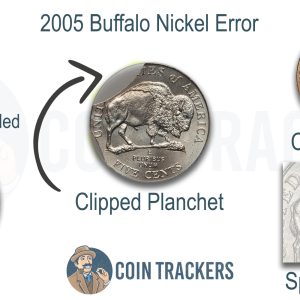
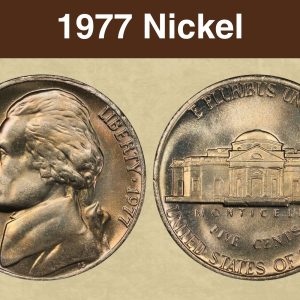
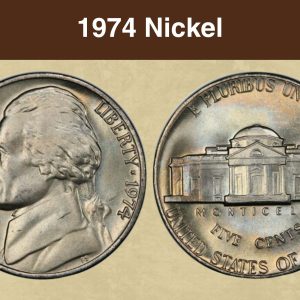
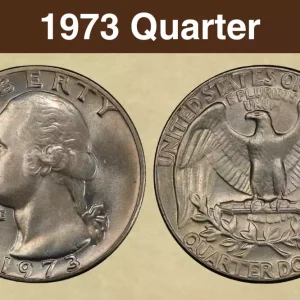
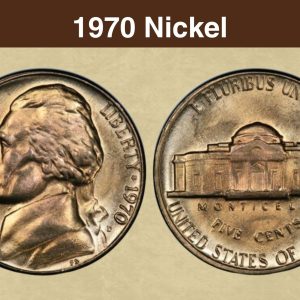
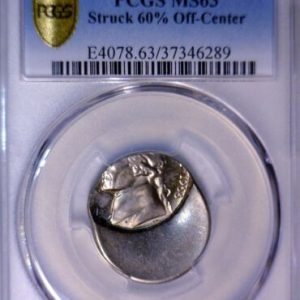
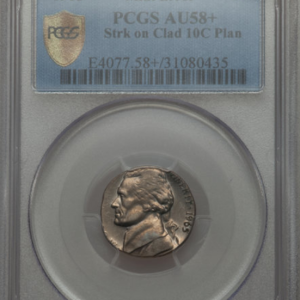
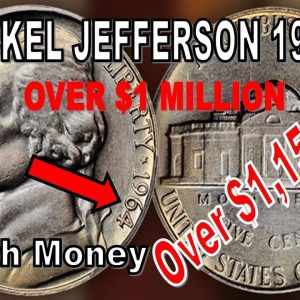
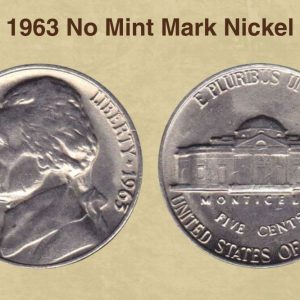
What 1979 nickel is worth money?
Most 1979 nickels are worth little more than their face value, but a few can be valuable if they are error coins with significant minting flaws like die breaks, double strikes, or off-center strikes. High-grade proof nickels can also have higher value, though most 1979 nickels are common and have no mint marks.
What is the difference between type 1 and type 2 1979 S nickel?
If this stick is shaped into an ‘S’ without the inner surfaces touching you have the basic shape of the Type 2 mint mark (example below). Now if you refine the two ends to make them bulb shaped you have the ‘Clear S, Type 2’. The 1979-S Type 1 is nicknamed ‘filled S’.
What is the error on the 1979 nickel rim?
This rare 1979 D Jefferson Nickel has a unique and interesting feature; the “D” is filled in and the letters on the rim are slightly off-kilter. The ‘W’ in We is also off. This coin was minted in Denver and is considered circulated. It is uncertified but highly sought after by collectors due to its error.
How much is a 1979 No mint mark?
The 1979 Lincoln penny with no mint mark is the standard Philadelphia coin with over 6 billion minted that year, so it’s a super common and recent coin. See attached. In circulated condition, it is under 10 cents and in high graded mint condition it can sell for a few dollars to up to $10 to $20.